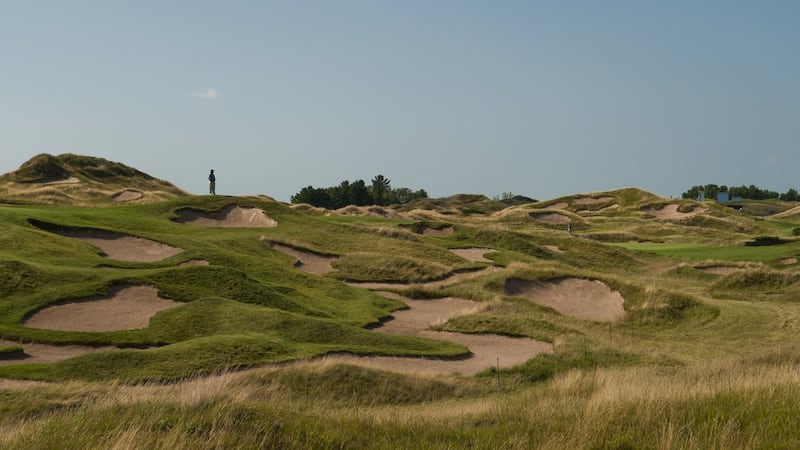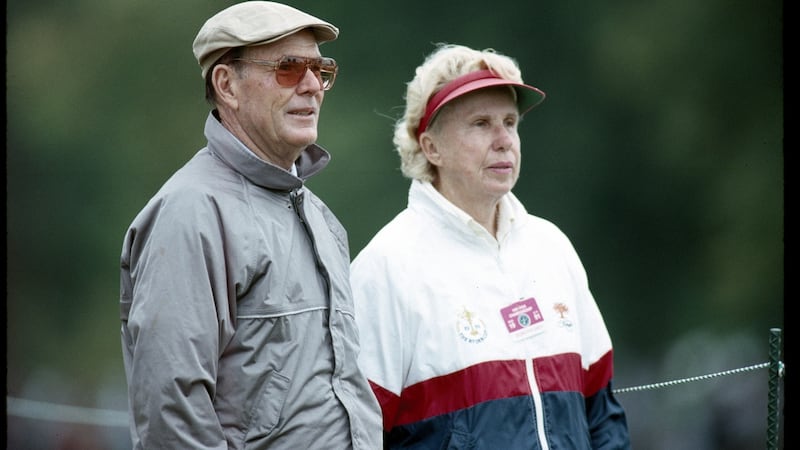When the dust settles following the 43rd staging of the Ryder Cup at the Straits Course on Sunday evening, there is a reasonable chance the star of the week could be the beloved course architect, Pete Dye – for the simple reason that, whenever something major is played on a Dye course, the course always finds a way to stand out.
Dye, who died last year aged 92, was a titanic figure in the realm of golf architecture – one of only four course architects to be enshrined in the World Golf Hall of Fame – having designed more than a hundred courses around the world across a panoramic six-decade career. His tracks have held six Major championships, most recently at the Ocean Course at Kiawah Island earlier this year. The key to understanding a Dye course is that he makes them look much harder than they actually play.
At Whistling Straits, for example, most of the sand from the countless bunkers – there are rumoured to be more than a thousand – are out of play and do not affect anything other than the players’ eyes. The deft use of optical illusion through blind tee shots, deceptively wide fairways and shrewd angles has been hailed as genius and decried as maddening, often in the same round. But as Dye famously put it: “Golf is not a fair game, so why build a course fair?”
A one-time life insurance salesman who played in six US Amateurs and the 1957 US Open (where he matched Arnold Palmer’s score and bettered that of Jack Nicklaus), Dye turned to course design in his mid-30s and he was only half of the operation. His wife, Alice, was a two-time US women’s senior amateur champion and a top-flight course designer herself. She saw herself as Pete’s editor and he always gave her credit.

It was Alice who spotted the crater surrounding the 17th at Sawgrass and suggested turning the peninsula into an island, and she who came up with the idea of raising the fairways of the Ocean Course so one could actually see the Atlantic. She also suggested moving the long par-three 17th at Whistling Straits right to the edge of Lake Michigan – a knee-knocker that will almost surely factor into the outcome this weekend. These features create what they call the fear factor. Players think about them before they go to bed the night before.
"I typically really enjoy Pete Dye golf courses," Jon Rahm said in May at the US PGA Championship. "You get to the tee, you expect a fairway that you're not really going to see, deceiving off the tee, very deceiving to the eye on every single shot. You have a shape off the tee and another shape coming into the green. It's a true ball-striker's golf course."
Many of the flourishes that became Dye's signatures – pot bunkers, fairway swales, railroad ties edging water hazards, small target greens – were inspired by the couple's visit to Scotland in 1963. After Pete played in the British Amateur at St Andrews, he remained in the country and conducted a thorough study of its classic courses. The Straits Course itself was built as a tribute to the great links courses of Scotland and Ireland, even if it does not play that way at all.
“He was a guy who really made you uncomfortable the whole round,” said Brandt Snedeker, who won at the Harbourtown Golf Links in Hilton Head, one of Dye’s first courses back in the 1960s. “And he did it visually. He’d always make you think.” Pete was called a master of deception, a visual intimidator, the Marquis de Sod – but they were both diabolical. Or was it Dye-abolical?
Alice was the first woman member and first president of the American Society of Golf Course Architects and she revolutionised design for the women’s game by taking their games into consideration rather than treating them as afterthoughts, which she did with the placement and play angles of tee boxes for women. Together they developed a refined architectural style that presented unique challenges to professionals and average players alike.

"While Pete designed to torment the most accomplished professional, his forward tees allowed the most inexperienced to play," said Herb Kohler, the toilet tycoon and Whistling Straits owner who brought Dye to Wisconsin to construct the course that will host this year's Ryder Cup on the dead flat of an abandoned airfield in the mid-1990s. "He would challenge the professional both physically and mentally, while remarkably accommodating the raw amateur who was learning the game."
The Dyes might be gone – Alice passed away one year before Pete – but they will no doubt be a big part of the conversation as the Straits Course takes centre stage once again. “At the end of the round golfers may call Pete Dye a few unmentionable names,” he wrote near the end of his life, “but that doesn’t keep me from thinking of new ways to try to challenge and thrill golfers on every hole.” – Guardian













